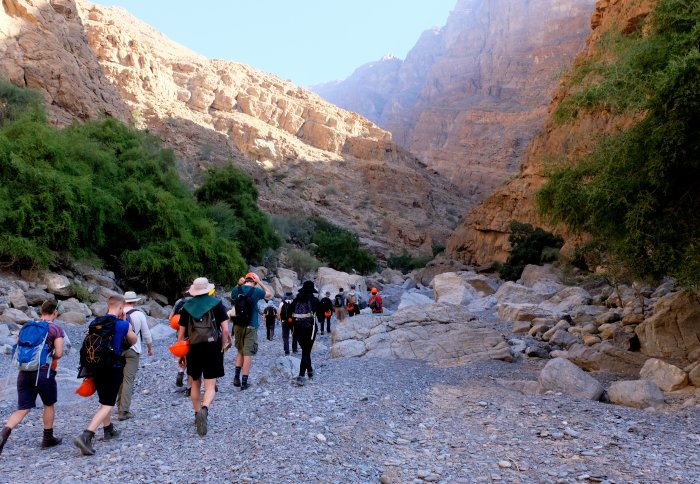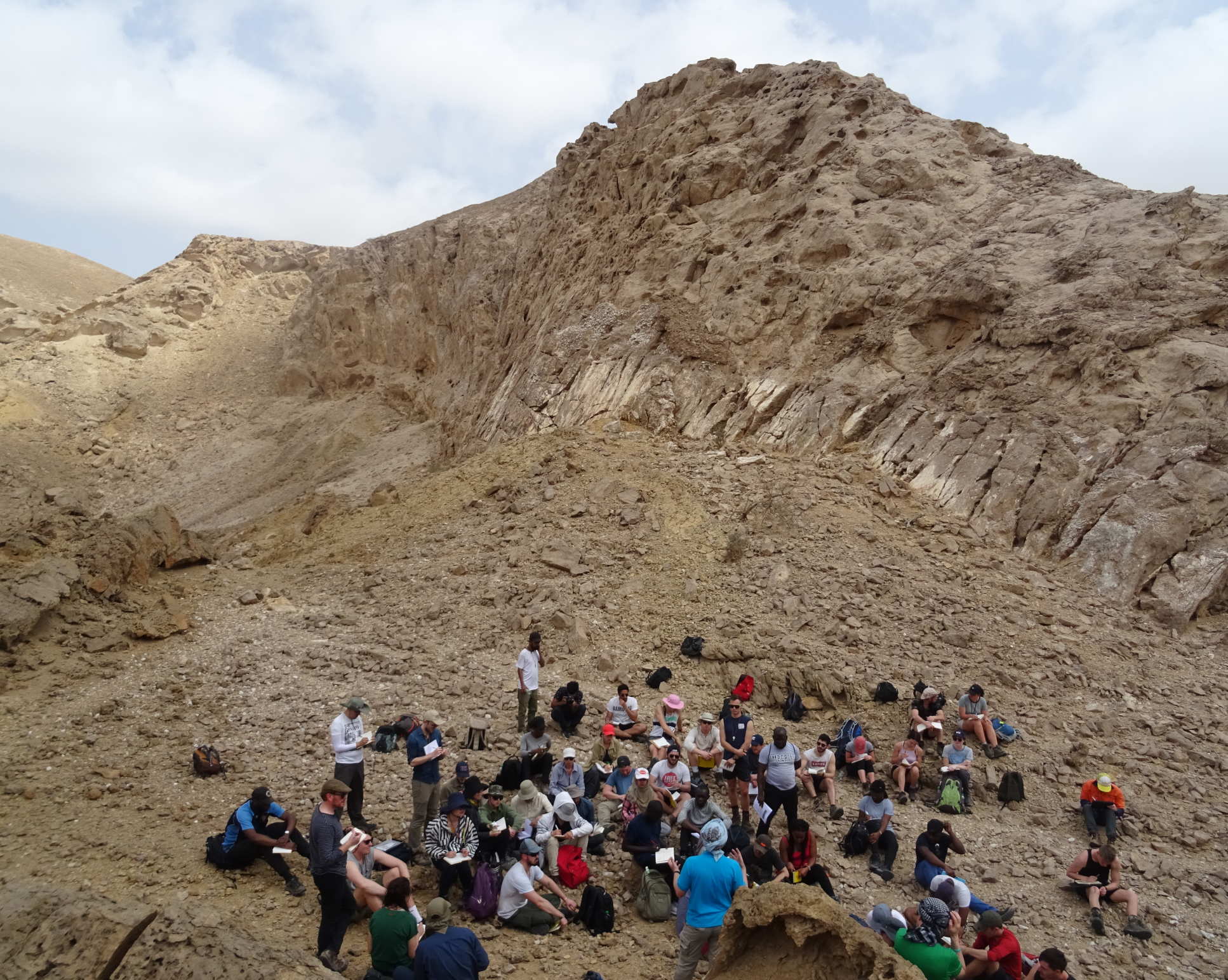Petroleum Geoscientists in Oman

Petroleum Geoscience MSc students in Oman
PhD student Sarah Robinson shares her experience of the Petroleum Geoscience Oman Fieldtrip
Our Petroleum Geoscience MSc students are recently back from fieldwork in Oman, and I was fortunate to join them as a demonstrator, having been as a student on the MSc last year.
During the six day trip we looked at a range of carbonate systems over a vast geological time-period, with a focus on carbonate sedimentology. The field trip aims to provide a practical synthesis of the material covered in the taught module 'Applied Sedimentology'. It also supports students’ understanding of how structural evolution and diagenetic processes can affect petroleum systems.
We saw Carbonates from the Precambrian through to modern day systems, observing depositional features including the Khuff Formation, a well-known reservoir system in Qatar, and distal equivalents to the Jurassic Arab Formation that forms the world’s largest reservoir (Ghawar).

The Cretaceous systems are spectacular and are well known for a number of reservoir types including large microbial reservoirs of the Shuabia formation, rudist related reservoirs in the UAE, and the unconventional potential of the Natih formation. One of the many highlights of the trip included a walkthrough of a modern carbonate system on the beautiful remote peninsular of Bar al Hikman. Students had the opportunity to walk over a spectacular sabkha (salt flat), muddy lagoons, storm deposits and sandy beaches.

As a demonstrator, I had the opportunity to engage with students and not only help them to observe and understand what we were seeing but to also learn from their interpretations. This year the trip included a modern carbonate system. I felt this was such a valuable addition to the trip as it allowed students to understand the facies belts and environments of a carbonate system that we could then refer to throughout the remainder of the trip.
The field course not only aids the learning within the carbonate aspect of Applied Sedimentology but also Petrophysics, Structural Geology and Basin Analysis. The trip gives an in-depth understanding of reservoir systems at outcrop and how these can be related to the subsurface. The structural evolution of Oman and structurally related diagenesis was demonstrated wonderfully at Jebel Madar salt dome. The impact of hydrothermal dolomite on porosity and permeability was seen at a spectacular outcrop in Snake Canyon. Field trips are invaluable to the understanding of core material taught in class, but also demonstrate how different courses are linked and how they require one another to understand the whole story.

Oman is not only a great geology field course but also a wonderful cultural experience. The food served is of Omani origin and freshly prepared each day. This trip is an amazing experience and I am excited to have the opportunity to attend as a demonstrator again next year.

Sarah Robinson is a PhD student in the Department of Earth Science and Engineering, and in 2017-18 was a Petroleum Geoscience MSc student at Imperial.
Article text (excluding photos or graphics) © Imperial College London.
Photos and graphics subject to third party copyright used with permission or © Imperial College London.
Reporter
Victoria Murphy
Institute of Global Health Innovation